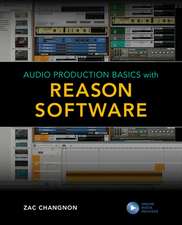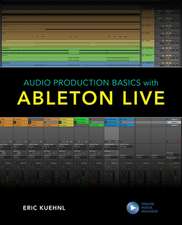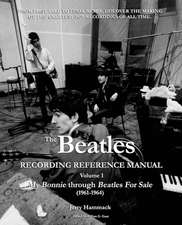Traveling Music Videos: New Approaches to Sound, Music, and Media
Editat de Dr. Tomáš Jirsa, Dr. Mathias Bonde Korsgaarden Limba Engleză Hardback – noi 2023
Din seria New Approaches to Sound, Music, and Media
- 11%
 Preț: 233.76 lei
Preț: 233.76 lei - 7%
 Preț: 148.75 lei
Preț: 148.75 lei - 13%
 Preț: 184.88 lei
Preț: 184.88 lei - 7%
 Preț: 149.02 lei
Preț: 149.02 lei - 30%
 Preț: 539.64 lei
Preț: 539.64 lei - 23%
 Preț: 191.13 lei
Preț: 191.13 lei - 34%
 Preț: 147.41 lei
Preț: 147.41 lei - 39%
 Preț: 164.91 lei
Preț: 164.91 lei - 21%
 Preț: 217.62 lei
Preț: 217.62 lei - 8%
 Preț: 160.44 lei
Preț: 160.44 lei - 30%
 Preț: 541.44 lei
Preț: 541.44 lei - 47%
 Preț: 409.10 lei
Preț: 409.10 lei - 30%
 Preț: 539.00 lei
Preț: 539.00 lei -
 Preț: 250.59 lei
Preț: 250.59 lei -
 Preț: 250.59 lei
Preț: 250.59 lei -
 Preț: 250.59 lei
Preț: 250.59 lei
Preț: 540.48 lei
Preț vechi: 774.07 lei
-30% Nou
Puncte Express: 811
Preț estimativ în valută:
103.45€ • 107.59$ • 86.69£
103.45€ • 107.59$ • 86.69£
Carte tipărită la comandă
Livrare economică 13-27 martie
Preluare comenzi: 021 569.72.76
Specificații
ISBN-13: 9781501397998
ISBN-10: 1501397990
Pagini: 288
Dimensiuni: 152 x 229 mm
Greutate: 0.55 kg
Editura: Bloomsbury Publishing
Colecția Bloomsbury Academic
Seria New Approaches to Sound, Music, and Media
Locul publicării:New York, United States
ISBN-10: 1501397990
Pagini: 288
Dimensiuni: 152 x 229 mm
Greutate: 0.55 kg
Editura: Bloomsbury Publishing
Colecția Bloomsbury Academic
Seria New Approaches to Sound, Music, and Media
Locul publicării:New York, United States
Caracteristici
Provides an innovative perspective that is multimodal and transnational with case studies drawn from New Zealand, Iceland, Norway, Denmark, France, Spain, Italy, Czech Republic, Poland, Hungary, England and the U.S.
Notă biografică
Tomás Jirsa is Associate Professor of Literary Studies at Palacký University Olomouc, Czechia. Interested in relations between literature and the visual arts, affect theory, and music video studies, his most recent book is Disformations: Affects, Media, Literature (Bloomsbury, 2021).Mathias Bonde Korsgaard is Associate Professor of Online Video Cultures at School of Communication and Culture, Aarhus University, Denmark. He has published extensively on music video and audiovisual studies, including the book Music Video After MTV (2017). Korsgaard is the editor-in-chief of the Danish online film journal 16:9.
Cuprins
IntroductionInto the Music Video Traffic: Platforms, Interventions, Extensions (Tomás Jirsa, Palacký University Olomouc, Czech Republic, and Mathias Bonde Korsgaard, Aarhus University, Denmark)Section 1: Topographies and Interventions1. For Real? The Cross-Pollination of Music Video and Documentary (Laurel Westrup, UCLA, USA)2. Moonwalking "Backwards into the Future": 'Poi E,' Music Video, and Documentary (Lisa Perrott, University of Waikato, New Zealand)3. Moving Maps into Musical Images: Music Video Mobile Cartographies (Tania Rossetto, University of Padua, Italy)4. Rapping a Scandal: The Political Interventions of Central European Music Videos (Tomás Jirsa, Palacký University Olomouc, Czech Republic)5. Pop, Protest, and Transformation: Peter Christopherson's 'Tainted Love' (Emily Caston, University of West London, UK)Section 2: Extensions and Intersections6. Art Music Video and the Gallery (Caleb Kelly, The University of New South Wales, Australia)7. Ghostly Transmedia: Julian House and Hauntological Audio-Vision (Jamie Sexton, Northumbria University, UK)8. Music Video Aesthetics in Live Stream Concerts: Aurora's A Touch of the Divine(Anna-Elena Pääkkölä, Åbo Akademi University, Finland)9. Lil Nas X's Hedonistic Travels of Earthly Delights (Zachary Bresler, University of Stavanger, Norway, and Stan Hawkins, University of Oslo, University of Agder, Norway)10. Miley Cyrus's 'Mother's Daughter' as Intersectional Feminist Activism? (Hanna-Mari Riihimäki, University of Turku, Finland)Section 3: Platforms and Interfaces11. Music Videos and Video Games: Radiohead's Kid A Mnesia Exhibition (Mathias Bonde Korsgaard, Aarhus University, Denmark)12. Transmedia and Intertextual Hauntology: Steven Wilson's "Drive Home" and 505 Games' Last Day of June (Lori Burns and Patrick Armstrong, University of Ottawa, Canada)13. Music Video's Forays into Online Interactive Concerts: Fortnite's Ariana Grande and Travis Scott Events (Carol Vernallis, Stanford University, USA)14. Enacting Virtual Boundaries: Music Video and the Changing Technological Landscape (Eugy Han, Stanford University, USA, and Saul Quintero, UCLA, USA)15. Traveling Sounds, Embodied Responses: Aesthetic Reflections on TikTok (Berenike Jung, University of Southampton, UK)Index
Recenzii
No longer confined to cable television or YouTube, music videos are constantly migrating to platforms as diverse as TikTok, commercials, VR, and video games, picking up remedial attributes native to each of these platforms along their journey. Traveling Music Videos provides a valuable roadmap for scholars to find their way into, through, and around this sprawling audiovisual ecosystem.
Music videos have been an independent art form for more than forty years now. They stand apart from the musical recordings upon which they are based, as well as from cinema and television. They are often characterized as much by formal experimentation as by commercial considerations. But in our current media environment, music videos have promiscuously intermingled with other expressive forms, and have multiplied on all sorts of media platforms. Traveling Music Videos explores these interactions, giving us an up-to-the-minute account of the cutting edge of both art and entertainment.
More than a decade after MTV dropped 'music television' from its logo, the music video as cultural object has moved from the postmodern flow of linear television to digital platforms and other spaces of exhibition. Introducing the concept of 'music video traffic,' Traveling Music Videos presents fifteen essays that use productive case studies to follow the music video in its trajectory across various media, from YouTube and TikTok to art galleries and video games. Moreover, Traveling Music Videos demonstrates the continued relevance of the music video as an object of cultural analysis in the study of music and media, both aesthetically and politically.
Music videos have been an independent art form for more than forty years now. They stand apart from the musical recordings upon which they are based, as well as from cinema and television. They are often characterized as much by formal experimentation as by commercial considerations. But in our current media environment, music videos have promiscuously intermingled with other expressive forms, and have multiplied on all sorts of media platforms. Traveling Music Videos explores these interactions, giving us an up-to-the-minute account of the cutting edge of both art and entertainment.
More than a decade after MTV dropped 'music television' from its logo, the music video as cultural object has moved from the postmodern flow of linear television to digital platforms and other spaces of exhibition. Introducing the concept of 'music video traffic,' Traveling Music Videos presents fifteen essays that use productive case studies to follow the music video in its trajectory across various media, from YouTube and TikTok to art galleries and video games. Moreover, Traveling Music Videos demonstrates the continued relevance of the music video as an object of cultural analysis in the study of music and media, both aesthetically and politically.
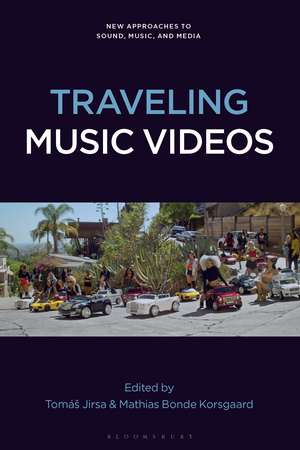
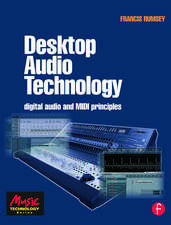
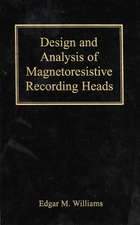
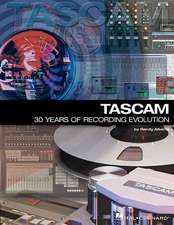



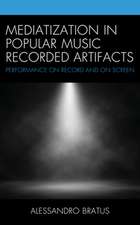
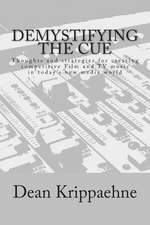
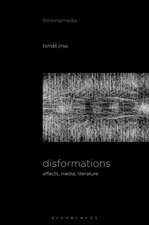
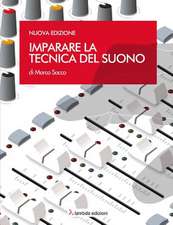

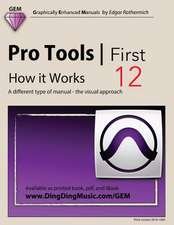


![The Secret to Mixing Vocals [Exposed]](https://i2.books-express.ro/bt/9781537533025/the-secret-to-mixing-vocals-exposed.jpg)
